Beekeeping is also called apiculture. Beekeeping is the management and maintenance of bee colonies, usually using man-made hives. Beekeeping is such a fun and rewarding experience that most Beekeepers, especially new ones, wonder if they can make a full-time income. Nevertheless, Australia’s honey bee and pollen industries play a crucial role in Australia’s economy and way of life. So let’s check out how to start Beekeeping in Australia below.
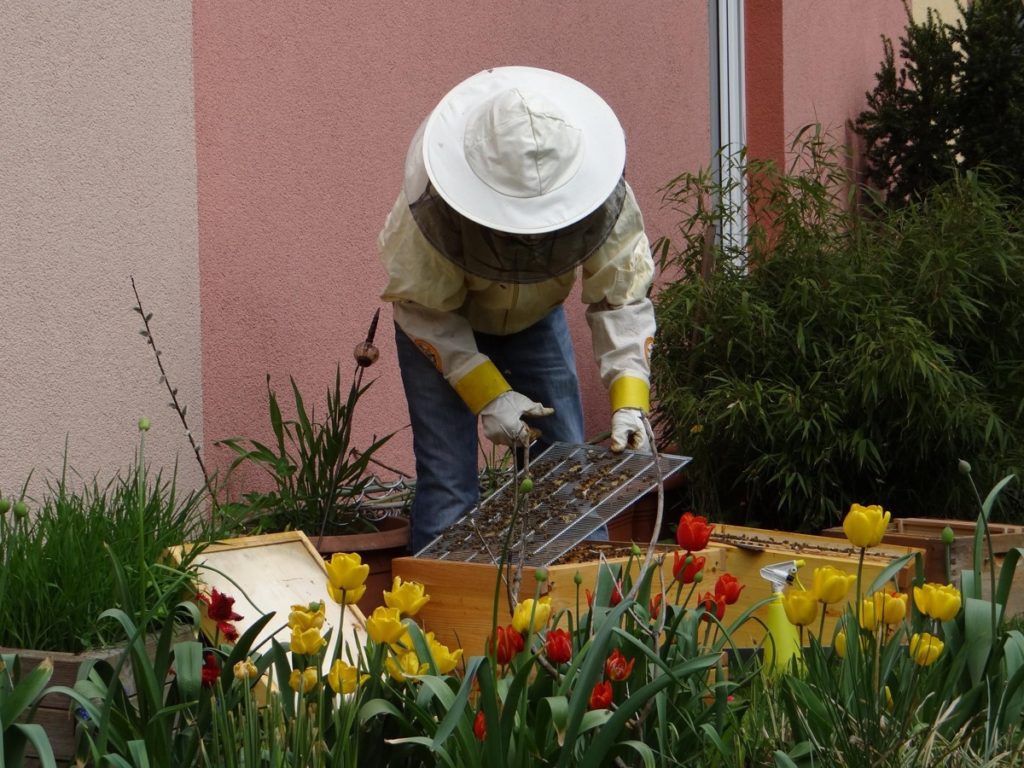
Benefits to raising Beekeeping
- Increase pollination in the garden and local area.
- Make your honey supply (and beeswax) which is also valuable in neighborhood bartering.
- Help keep a valuable skill alive.
- Increase your self-reliance.
- Help increase the number of bees growing in the country.
- Get a natural vaccine for hay fever.
Beekeeping industry in Australia
The Australian honey Beekeeping industry has long recognized the ideal of minimizing any impact of its activities on the environment. The regularization of a set of national best practices for Beekeeping in the Australian environment demonstrates the community’s commitment to the Australian Beekeeping industry to ensure that it is based in Australia. It is doing everything to eliminate and mitigate its potential effects.
The Australian honey bee industry currently produces 20,000 to 30,000 tons of honey annually, with a total production value of $ 98 million. However, this sector can be further developed by harvesting propolis. If you are thinking of raising bees, a good first step is to join the local bee association. They thrive throughout Australia and hold regular field days. It is a great way to test your abilities and see if thousands of bees have bitten you.
You need to learn Beekeeping skills before raising a full-time Beekeeper. Most hives are found in the eastern states of Queensland, New South Wales, Victoria, Tasmania, and the southwest corner of Western Australia. Australia is the 4th largest exporter of honey after China, Argentina, and Mexico. Australian honey’s high quality and unique taste allow exporters to receive a premium price.
In case you missed it: How This Woman Made 2 Lakh per Month from Beekeeping: A Success Story of Honey Bee Farmer
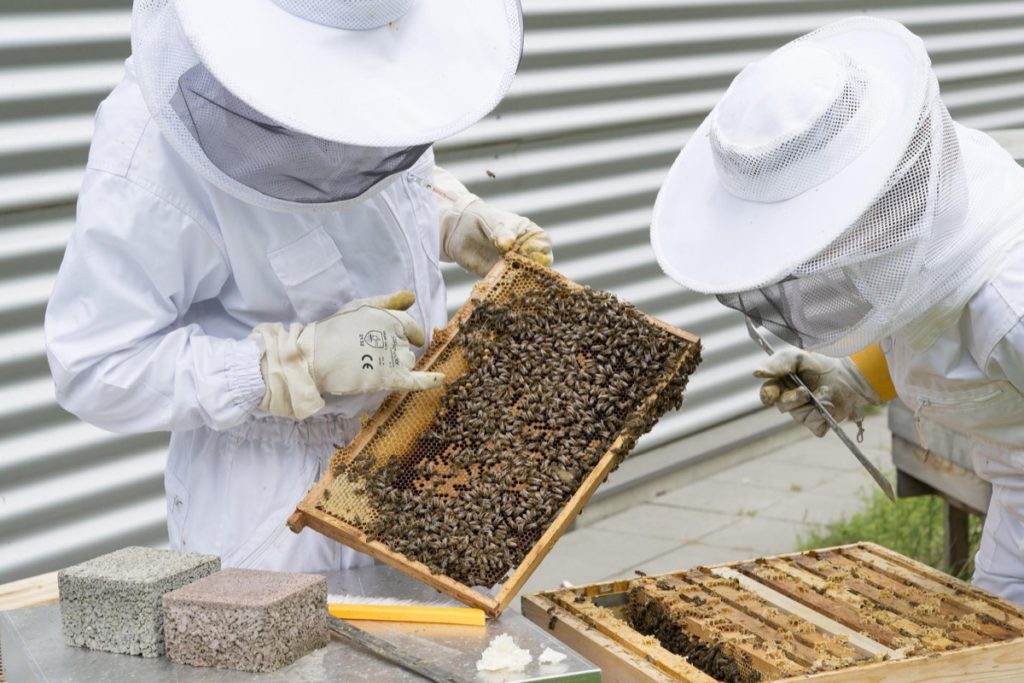
Number of Beekeepers in Australia
The honey bee industry in Australia consists of approximately 30,000 registered Beekeepers who own 668,000 hives. Only 6% of registered Beekeepers have more than 50 hives, but it is estimated that they account for more than 80% of Australia’s total honey production and production of bee products and services.
How to start Beekeeping in Australia
Beekeeping can feel overwhelming for beginners. First, you need to find the right Beekeeping equipment, find a place for your hive, and get your hands on some real live bees.
Local Knowledge, Local Rules – Local help and knowledge are essential for new Beekeepers. It’s critical to know how local conditions can affect your hive, and it’s easy to have local contacts for advice, mentorship, or just buying second-hand gear – the easiest way to do this is to join a bee club. It is also essential to understand and follow the rules and regulations for Beekeeping in your area.
Learn the basics of Beekeeping – If you understand how it works, caring for a hive is much easier. Bee colonies are complex social structures with a fixed role and a year-round pattern of behavior.
When to start – Once you have the gear, you need to choose the right time to set up the hive. Bee behavior follows a pattern throughout the year, so finding the right time gives you the best chance of success.
Honey production
There is no accurate measure of Australia’s total honey production. The Australian Bureau of Statistics (ABS) periodically reports on Beekeeping, but production estimates may be lower for other reasons since it only collects data from Beekeepers with more than 50 hives.
Find a suitable location for a beehive
To start Beekeeping, you need a suitable place for bees. You do not need much land for a hive of bees. While access to food sources is essential, they do not have to be on your property. Bees travel long distances to graze. However, it is beneficial to provide extra water nearby in drought or extreme heat. The bees are oriented east/southeast, across the surface, near water sources, nectar, and pollen.
Also, they should be easily accessible in the workroom. Other considerations include afternoon shade, winter break, protection from neighbors, good airflow, and drainage. The location you need and where you hive may depend on the rules and regulations for Beekeeping in your area, especially in urban and suburban areas where neighbors are close.
In case you missed it: How To Start Beekeeping For Beginners
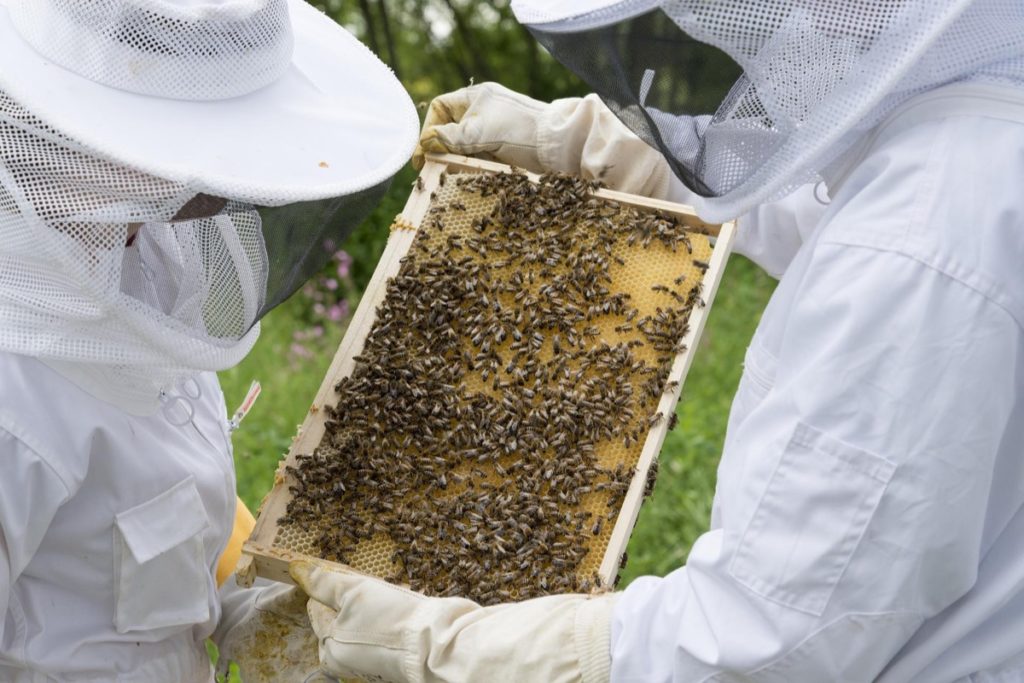
Beekeeping courses in Australia
Providers of Beekeeping Courses in Australia
The Beekeeping course provides the essential information you need to start as a Beekeeper. By the end of the Beekeeping course, you must be able to;
- Identify the different ways of raising bees
- Choose the correct position for bees, flora, and bees
- Note the rules regarding Beekeeping
- Successfully maintain a beehive
- Implement the process of harvesting honey and rendering wax
- Identify pests and diseases that affect bees
- Distinguish the products made from honey and wax
Use modern and new equipment for Beekeeping
There is a good amount of technology these days. There are many new tools available for Beekeeping. You should choose the best bee equipment for your bee farm. In addition, you should avoid using second-hand devices. Although you will get those second-hand goods at cheaper prices, you will not get anything. Plus, it’s always better to use new tools.
Commercial Beekeeping in Australia
Commercial Beekeeping has been an incredibly successful business because of the vast area of native plants, especially eucalyptus and other members of Myrtaceae and Proteaceae. This abundant source of native flowers produces large quantities of pollen and nectar, making the continent an ideal climate and geographical region for bees.
Healthy honey bee colonies are essential for bee-dependent horticulture, seed crop pollination, and economic stability. In addition to commercial and sideline Beekeeping establishments, Australia enjoys fun with bee colonies across thousands of amateur Beekeepers. Australian Beekeepers have shown great ingenuity in developing production methods and management patterns, leading to a thriving national Beekeeping industry.
The Beekeeping business in Australia is primarily nomadic, with many hives being moved to different locations up to 20 times a year, either for a pollination contract or for honey production. This large-scale movement is due to the emergence of flowers and the high variability in pollen and nectar production, which are associated with most Beekeeping plants. As a result, the Australian bee industry produces between 20,000 and 30,000 tonnes of honey annually.
As in other parts of the world, honey production in Australia is mainly due to climatic conditions and weather events, such as droughts, floods, and bushfires on the bee population. Other factors that may affect the production level are bee pests and diseases, malnutrition, and the health and accessibility of native plants from which honey is produced.
Australia is one of the top ten honey-producing countries globally, with large quantities of honey produced in Australia being exported to various countries abroad in large quantities and through retail shipments. Other bee products include wax production, sales of queen bees and packaged bees, pollen, propolis, and paid pollination services.
Set up your hive
Arrange your hive before the bees arrive, especially if you get a package of bees. You don’t want your bees to sit around for days until you collect things. Depending on how many frames the bees fill, you may have a slightly wider latitude with a nuc. With just five frames in a nuc, they can be close to capacity, and you’ll need to give them more space quickly. How much time you need to set up your hive depends on what you have purchased. Fully assembled and assembled boxes with assembled frames and foundations take some time.
In case you missed it: Loans and Subsidies on Beekeeping in India (Apiculture)
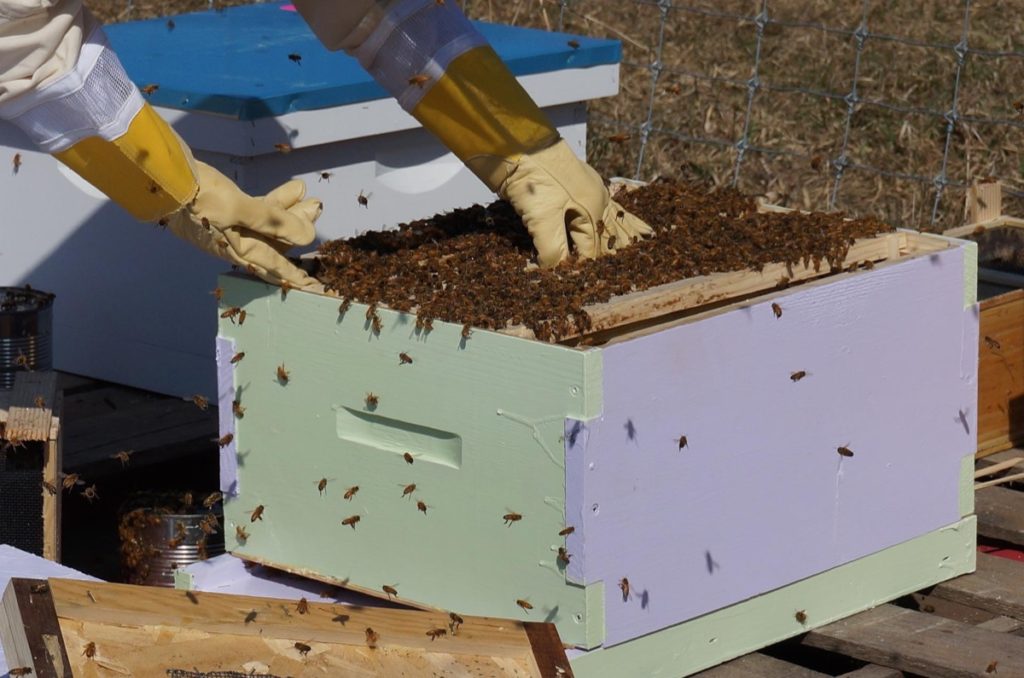
However, if you have purchased unsold goods, you need time to put them together. In nature, bee colonies make their combs in tree hollows and similar hollows. Beeswax combs are attached to the upper surface and sides of the cavity. Similarly, when a colony occupies an empty hive of bees without frames, the comb is attached to the upper surface and adjacent combs. Unfortunately, combs cannot be removed without first cutting them for free. These hives are called ‘box hives.’
Australia’s most commonly used hive box is the total depth ‘Langstroth’ box. Shallower boxes such as ‘Half Depth,’ ‘WSP,’ ‘Ideal,’ and ‘Manley’ are less common, but Beekeepers use them when lifting excess weight. Some Beekeepers use a full-depth bottom box for the baby and shallow boxes to store the honey crop. However, the frame and the comb do not replace each other. The half-depth and ideal fit holders for honeycomb parts.
In most parts of Australia, spring is the best time to establish nuc or nucleus colonies. Under favorable conditions, the colony develops rapidly and can produce a good honey crop in its first season. However, nucs acquired at the end of the year, for example, in early autumn, may need special care to ensure that they have enough adult bees to survive the winter. Bees also need plenty of time to feed and build their honey and pollen stores, as in most districts, very little fodder is available during the colder months.
Rules and Regulations for Beekeepers in Australia
Many people dream of becoming Beekeepers, but some jump to the real beehive. This blog will help you understand some of the basics of starting Beekeeping in Australia. Beekeeping is strictly prohibited in Australia to reduce the risk of disease transmission and protect the honey industry. The hive must be registered with your state or territory, and you may need to pay a fee in some areas.
In most places, you need to clearly label your hive and keep it accessible if state inspectors want to inspect it. When your hive is ready and running, the Beekeeping procedure requires that you keep a close eye on pests or disease symptoms and keep a detailed record of your observations. If pests or diseases emerge, you are expected to treat the hive properly – or in some cases, destroy the colony. When it comes to hives, you have a few choices. Langstroth hives, also called vertical hives, are the most common in Australia.
Buy your bees – Once you’ve purchased and assembled your hive, the final step is to get a colony to fill it. There are a few methods to get bees in Australia – you can buy a package of bees that will grow into a colony, buy a nucleus colony that is already partially established, catch a swarm, or buy a working hive from another Beekeeper. However, when you do, it’s best to start in the spring or summer so that your bees have plenty of time to set up their honey shops for the winter.
In case you missed it: Beekeeping Training Centers; Institutes in India
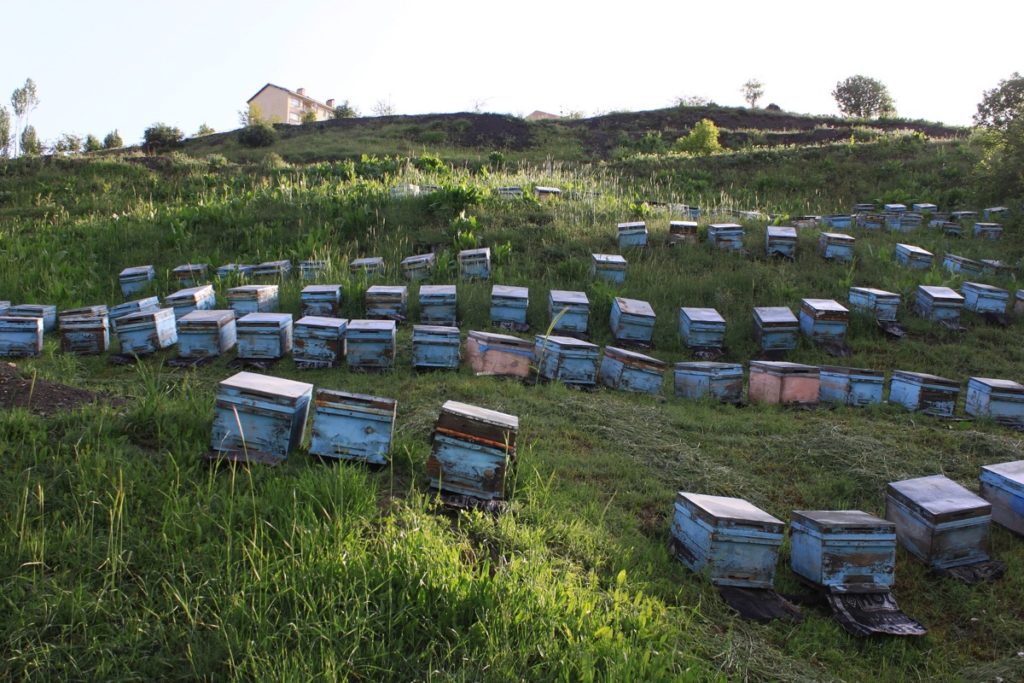
Provide a water source for bees
It is now necessary to provide a good water supply for the bees in a partially shaded area close to the hive. Never assume that the colony will meet its water needs without your help. A strong colony of bees will use more than a liter of water on a hot day. Ensure water supply before the hive arrives in the area – otherwise, the bees will become accustomed to watering where they do not want to, and it will be difficult to change their habits.
Water containers should contain floating materials (cork, polystyrene foam, sticks) to provide a landing platform and reduce the risk of bees drowning. An alternative is to provide wet sand and fine gravel trays to provide a ‘beach’ for bees. The water level can be raised by slowly dripping water from a container above the tray. A Boardman feeder fitted on the roof entrance can also be used to supply water. However, the feeder needs daily attention to replace the water used by the bees. Bees sometimes prefer slightly salty water.
Permit to keep bees
If you plan to keep bees on your premises, you may need this permission. This permit will not be issued if bees are a nuisance. Examples include when you do not need this permit;
- If your premises are classified as a rural enclosure, and you keep a hive of bees at a specified distance from an adjacent property;
- If you are not keeping bees on your premises for more than eight weeks in 12 months; and
- If you are raising bees on your land for the purpose of pollinating crops.
License for Beekeeping business in Australia
A license specifies the need to obtain identification/certification and registration to carry out a particular business activity.
Eligibility requirements – To be eligible for Beekeeping, you must be registered as a Beekeeper under state legislation. You must also comply with the conditions set by the council to grant this permit. These conditions may include;
- Adequate water supply to the land;
- Keeping bees at a certain distance from the boundaries of their land;
- Creating a barrier to prevent bees from flying low over the adjacent land; and
- The number of beehives on your land is allowed.
For more information on Beekeeping eligibility requirements, please consult the Contact Officer.
In case you missed it: Goat Farming in Australia: Breeds, How to Start, and Guide
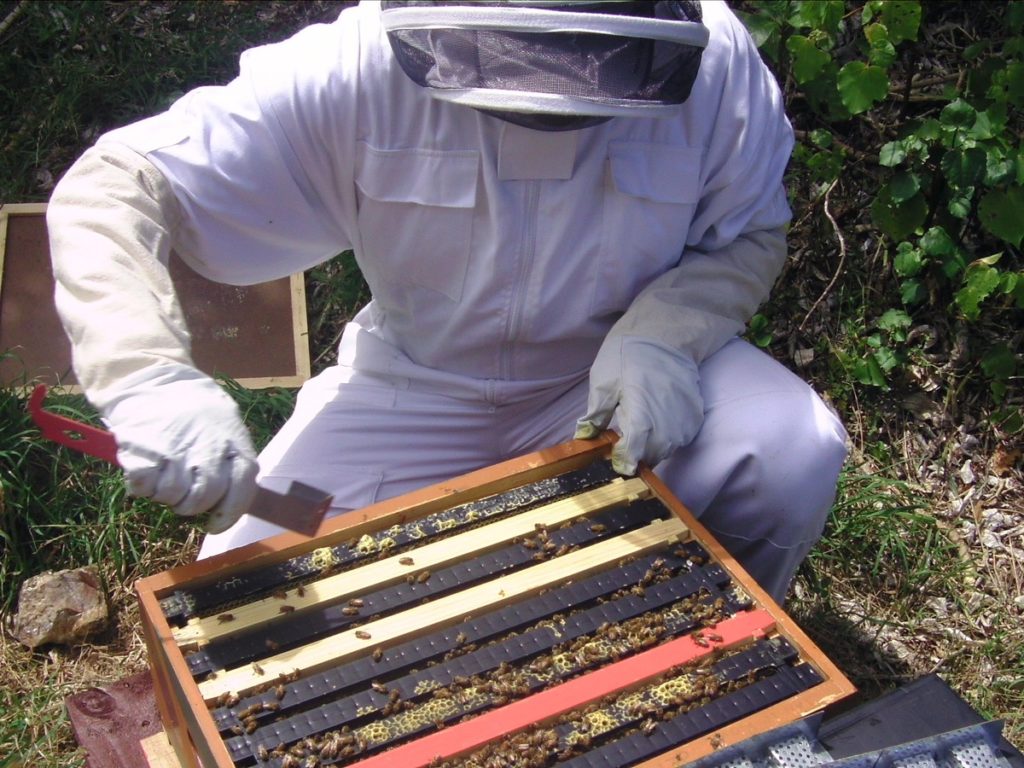
Frequently Asked Questions about Beekeeping in Australia (FAQ)
Which direction should the beehive face in Australia?
Keep the hive entrance away from existing winds. Ideally, if you are in the Northern Hemisphere, turn your north direction to the South for the Southern Hemisphere.
How many bee hives living in Australia?
Over 600,000 hives in Australia produce more than 30,000 tons of honey a year.
How much salary of a Beekeeper make in Australia?
The average salary of a Beekeeper in Australia is $ 54,273 per year.
Conclusion
Honey has wonderful demand in Australia. Beekeepers earn an excellent income with a perfect bee-farming business plan.
- Types of Pesticides Used in Agriculture: A Beginner’s Guide
- Economical Aquaculture: A Guide to Low-Budget Fish Farming
- 15 Common Planting Errors That Can Doom Your Fruit Trees
- How to Make Houseplants Bushy: Effective Tips and Ideas
- Innovative Strategies for Boosting Coconut Pollination and Yield
- Pollination Strategies for Maximum Pumpkin Yield
- The Complete Guide to Chicken Fattening: Strategies for Maximum Growth
- Natural Solutions for Tulip Problems: 100% Effective Remedies for Leaf and Bulb-Related Issues
- Revolutionizing Citrus Preservation: Towards a Healthier, Greener Future
- Natural Solutions for Peony Leaf and Flower Problems: 100% Effective Remedies
- Maximizing Profits with Avocado Contract Farming in India: A Comprehensive Guide
- Natural Solutions for Hydrangea Problems: 100% Effective Remedies for Leaf and Flowers
- The Ultimate Guide to Choosing the Perfect Foliage Friend: Bringing Life Indoors
- From Sunlight to Sustainability: 15 Ways to Use Solar Technology in Agriculture
- The Ultimate Guide to Dong Tao Chicken: Exploring from History to Raising
- The Eco-Friendly Makeover: How to Convert Your Unused Swimming Pool into a Fish Pond
- Mastering the Art of Delaware Chicken Farming: Essentials for Healthy Backyard Flocks
- 20 Best Homemade Fertilizers for Money Plant: DIY Recipes and Application Methods
- How to Craft a Comprehensive Free-Range Chicken Farming Business Plan
- Brighten Your Flock: Raising Easter Egger Chickens for Beauty and Bounty
- How to Optimize Your Poultry Egg Farm Business Plan with These Strategies
- Subsidy for Spirulina Cultivation: How Indian Government Schemes Encouraging Spirulina Farmers
- Ultimate Guide to Raising Dominique Chickens: Breeding, Feeding, Egg-Production, and Care
- Mastering the Art of Raising Jersey Giant Chickens: Care, Feeding, and More
- Ultimate Guide to Raising Legbar Chickens: Breeding, Farming Practices, Diet, Egg-Production
- How to Raise Welsummer Chickens: A Comprehensive Guide for Beginners
- How to Protect Indoor Plants in Winter: A Comprehensive Guide
- Ultimate Guide to Grow Bag Gardening: Tips, Tricks, and Planting Ideas for Urban Gardeners
- Guide to Lotus Cultivation: How to Propagate, Plant, Grow, Care, Cost, and Profit
- Agriculture Drone Subsidy Scheme: Government Kisan Subsidy, License, and How to Apply Online
- Ultimate Guide to Raising Araucana Chickens: Breed Profile, Farming Economics, Diet, and Care
- Bringing Hydroponics to Classroom: Importance, Benefits of Learning for School Students
- Ultimate Guide to Raising Polish Chickens: Breed Profile, Farming Economics, Diet, and Care
- Ultimate Guide to Raising Australorp Chickens: Profile, Farming Economics, Egg Production, Diet, and Care
- Silkie Chicken Farming: Raising Practices, Varieties, Egg Production, Diet, and Care
- Sussex Chicken Farming: Raising Practices, Varieties, Egg Production, Diet and Care